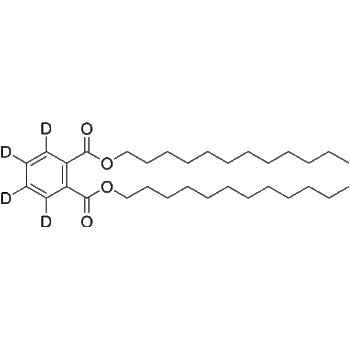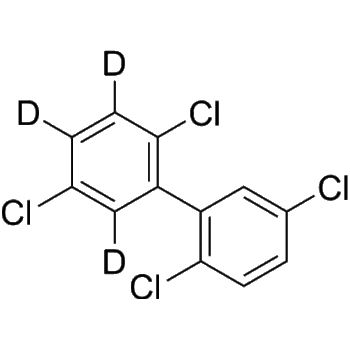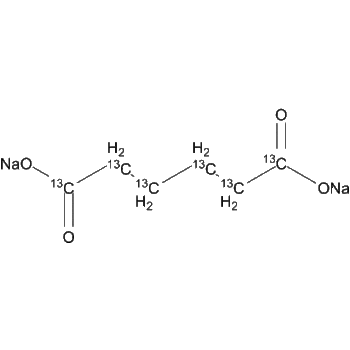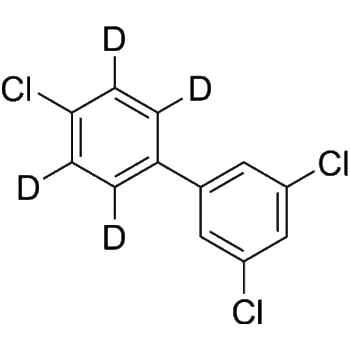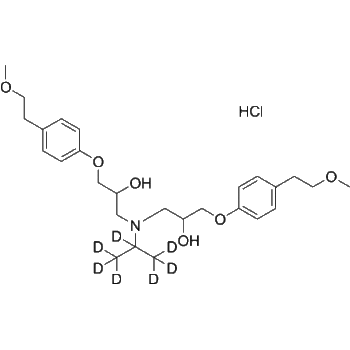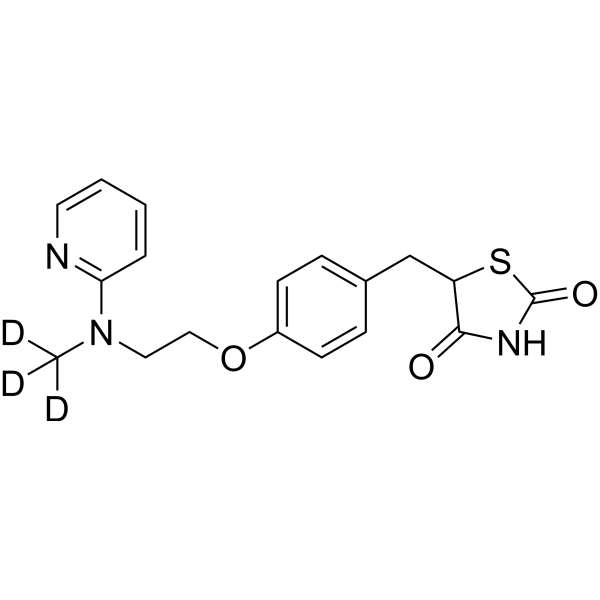
Download Files:
Rosiglitazone-d3
SKU
HY-17386S-1mg
Category Isotope-Labeled Compounds
Tags Apoptosis;Autophagy;Cell Cycle/DNA Damage;Membrane Transporter/Ion Channel;Neuronal Signaling;Others;Vitamin D Related/Nuclear Receptor, Autophagy;Ferroptosis;Isotope-Labeled Compounds;PPAR;TRP Channel, Cancer; Metabolic Disease; Inflammation/Immunology; Neurological Disease
Products Details
Product Description
– Rosiglitazone-d3 is the deuterium labeled Rosiglitazone. Rosiglitazone (BRL 49653) is a selective, orally active PPARγ agonist with EC50s of 30 nM, 100 nM and 60 nM for PPARγ1, PPARγ2, and PPARγ, respectively. Rosiglitazone binds to PPARγ with a Kd of approximately 40 nM. Rosiglitazone is also an activator of TRPC5 (EC50=~30 μM) and an inhibitor of TRPM3[1][2][3][4].
Web ID
– HY-17386S
Shipping
– Room temperature
Applications
– Metabolism-protein/nucleotide metabolism
Molecular Formula
– C18H16D3N3O3S
References
– [1]Lehmann JM, et al. An antidiabetic thiazolidinedione is a high affinity ligand for peroxisome proliferator-activated receptor gamma (PPAR gamma). J Biol Chem. 1995 Jun 2;270(22):12953-6.|[2]Willson TM, et al. The structure-activity relationship between peroxisome proliferator-activated receptor gamma agonism and the antihyperglycemic activity of thiazolidinediones. J Med Chem. 1996 Feb 2;39(3):665-8.|[3]Thouennon E, et al. Rosiglitazone-activated PPARγ induces neurotrophic factor-α1 transcription contributing to neuroprotection. J Neurochem. 2015 Aug;134(3):463-70.|[4]Majeed Y, et al. Rapid and contrasting effects of rosiglitazone on transient receptor potential TRPM3 and TRPC5 channels. Mol Pharmacol. 2011 Jun;79(6):1023-30.|[5]Ateyya H, et al. Beneficial effects of rosiglitazone and losartan combination in diabetic rats. Can J Physiol Pharmacol. 2018 Mar;96(3):215-220.|[6]Russak EM, et al. Impact of Deuterium Substitution on the Pharmacokinetics of Pharmaceuticals. Ann Pharmacother. 2019;53(2):211-216.
CAS Number
– 1132641-22-5
Molecular Weight
– 360.45
SMILES
– O=C(N1)C(CC2=CC=C(OCCN(C3=NC=CC=C3)C([2H])([2H])[2H])C=C2)SC1=O
Clinical Information
– No Development Reported
Research Area
– Cancer; Metabolic Disease; Inflammation/Immunology; Neurological Disease
Solubility
– 10 mM in DMSO
Target
– Autophagy;Ferroptosis;Isotope-Labeled Compounds;PPAR;TRP Channel
Pathway
– Apoptosis;Autophagy;Cell Cycle/DNA Damage;Membrane Transporter/Ion Channel;Neuronal Signaling;Others;Vitamin D Related/Nuclear Receptor
Product type
– Isotope-Labeled Compounds
Disclaimer: All products are for Research use only unless clearly stated otherwise on the product datasheet. Datasheets provided on the website are drafts for reference purpose only and you are requested to always refer to the hard copy included in the kit for your experimentation. Agdia Products are available for delivery only in Canada.
